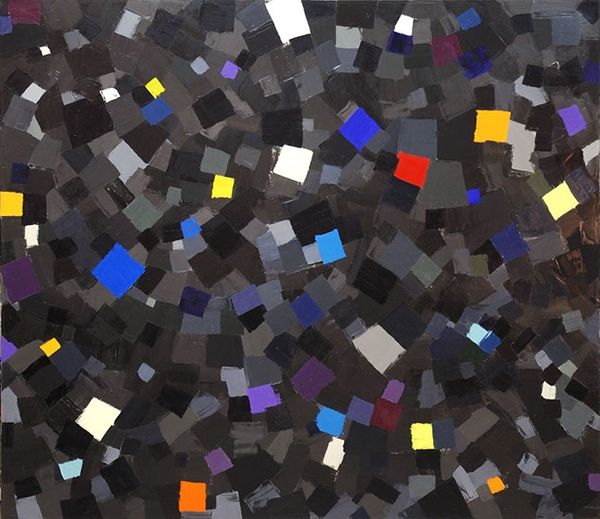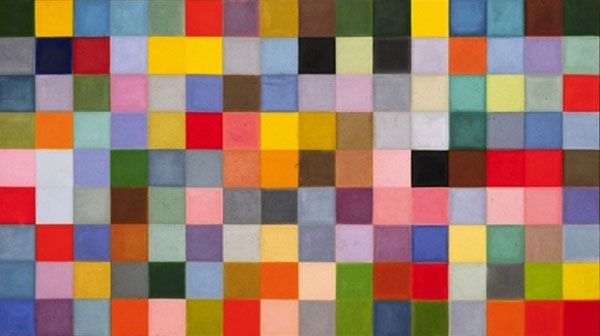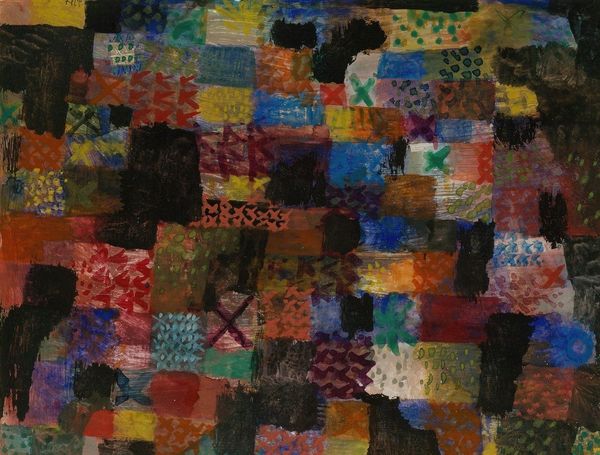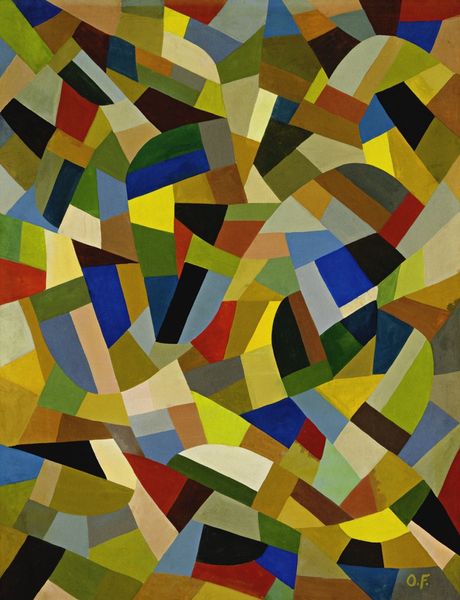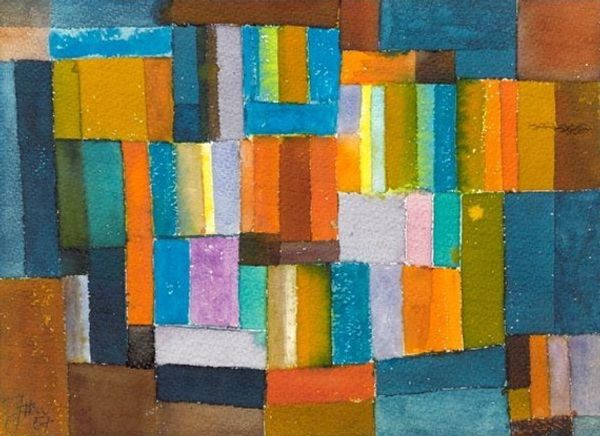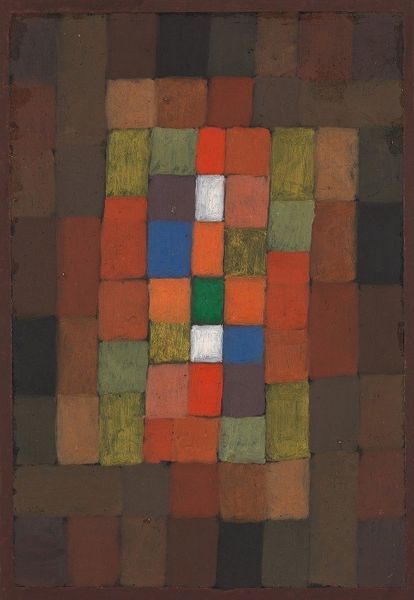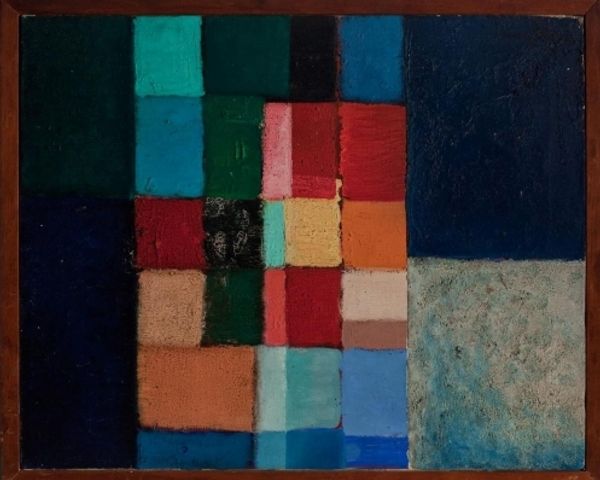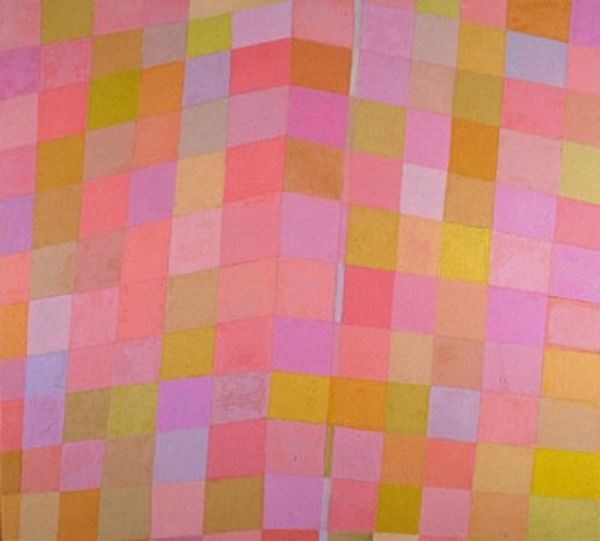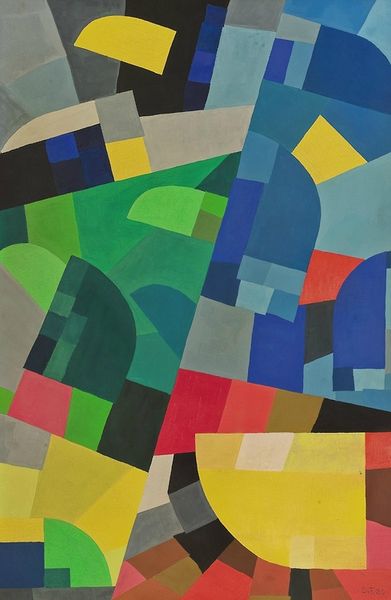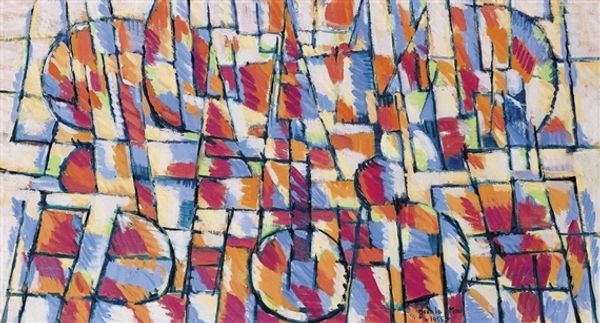
painting, acrylic-paint, impasto
#
cubism
#
natural stone pattern
#
painting
#
pattern
#
pattern
#
german-expressionism
#
acrylic-paint
#
impasto
#
geometric
#
modernism
Copyright: Public Domain: Artvee
Curator: "May Picture" painted by Paul Klee in 1925. The artwork seems to be acrylic on impasto, incorporating Cubism, Modernism and German-Expressionism. What strikes you most about it? Editor: Well, at first glance, it looks like a field of scattered tiles after an earthquake. The colors are muted, yet somehow vibrant. It’s both calming and a bit unsettling. There is order and disarray all mixed into one, isn’t it? Curator: It does have that feeling of being built and broken at the same time. Klee’s use of color is fascinating here. He’s using what I would say is a sort of dissonant harmony, contrasting blues and reds against greens and grays to create tension within this seemingly ordered grid. Editor: You know, when I look at each square separately, they’re kind of boring on their own. But together, it starts resonating— the interplay between the textures of acrylic and impasto bring forth the pattern to life. Klee captures this mood of growth and change and I wonder was this reflective of German's culture during the roaring twenties. Curator: Possibly, Klee certainly would have been influenced by the artistic and cultural currents of that period. It's as if the rigid structures were in constant motion during that time, yet, there was this undercurrent of hope. Editor: It almost looks like a digital mosaic. I could get lost staring at this. So, this painting is called "May Picture." Now that feels intentional. Like it could be about rebirth after what may have been perceived as disaster. Curator: Or, the new architecture as utopian impulse that reflected new social relationships based on progress and cooperation during the Weimar Republic era? Art and life, you see. Editor: Precisely! Thank you for sharing such wonderful insights. It's a work that holds on your attention. Curator: Indeed! It leaves much for our senses to experience.
Comments
No comments
Be the first to comment and join the conversation on the ultimate creative platform.
